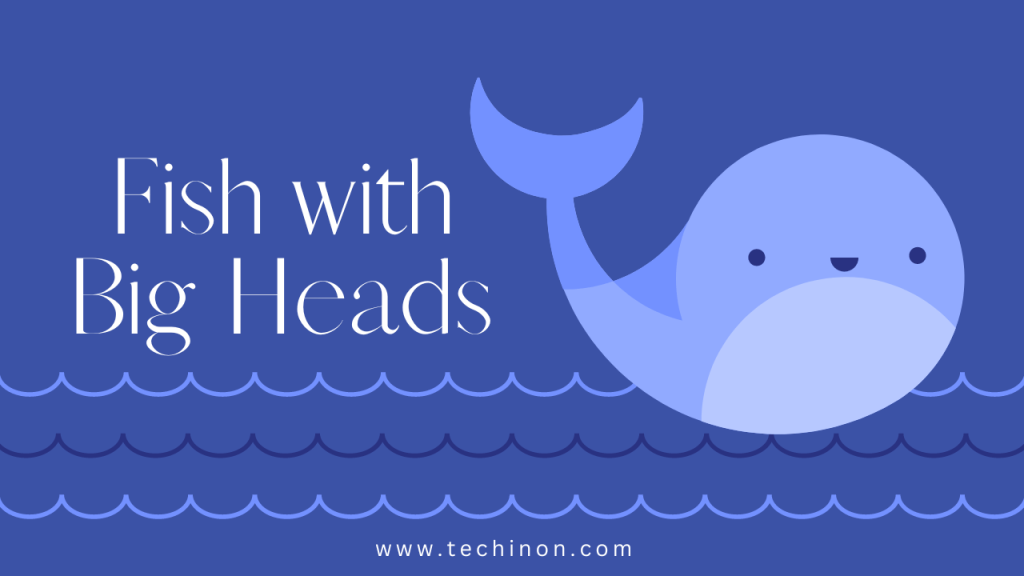Fish constitute a vast and diverse group of creatures that never cease to amaze us with their incredible range of sizes, shapes, colors, and characteristics. Among the most captivating of these aquatic marvels are the fish with big heads. Their oversized crania have sparked curiosity, excitement, and an array of questions among marine biologists and enthusiasts alike. But what are some fish species with large heads? What is the purpose of a fish’s enlarged head? And how do fish with big heads differ in terms of feeding habits? Let’s dive into the world of these aquatic creatures with big heads and discover the wonders that lie beneath the surface.
World of Big-Headed Fish
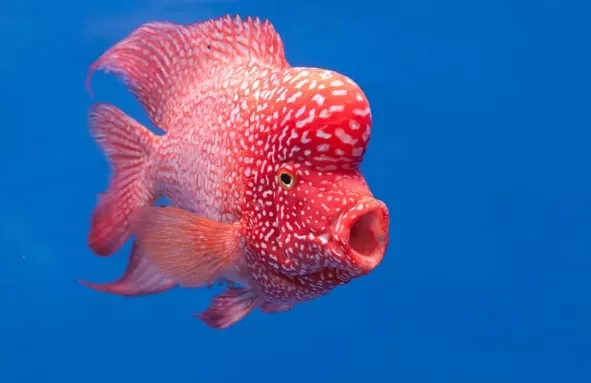
Some of the most famous fish species known for their large heads include the aptly-named Bighead Carp, the extraordinary Mola Mola, or Ocean Sunfish, and the intriguing Pufferfish. These species are characterized by their big heads and are often the subjects of admiration and scientific study due to their distinctive cranial features.
The Bighead Carp, for instance, is a freshwater species native to Eastern Asia, known for its disproportionate head size compared to its body. The Ocean Sunfish, on the other hand, is the heaviest known bony fish in the world, with most of its weight concentrated in its massive, almost flat, head. The Pufferfish, recognizable by its pronounced and inflatable head, is another example of fish species exhibiting cephalic enlargement.
Why Do Fish Have Big Heads?
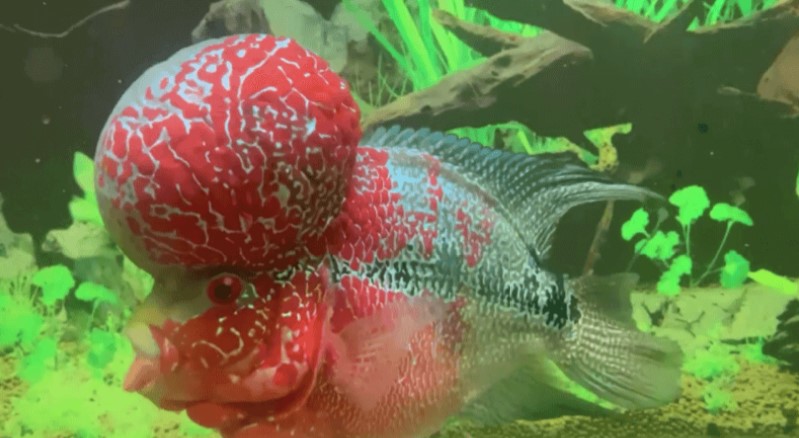
Understanding why fish develop big heads takes us on a fascinating journey of evolutionary biology. The enlarged heads of these species are not a quirk of nature but the result of evolutionary adaptation, serving specific purposes vital to survival.
The head of a fish accommodates vital organs like the brain and sensory organs, and in some cases, additional structures such as strong jaws and special apparatus for food intake. A larger head can often mean a larger brain, enhancing cognitive abilities and sensory perception. In some species, the oversized heads house powerful jaws or specialized mouthparts, enhancing their feeding capabilities.
For instance, the fish displaying hypertrophied heads often have stronger jaws, enabling them to tackle a wider range of prey. Such is the case for fish like the grouper, which uses its large mouth and powerful jaws to ambush and swallow its prey whole. Similarly, the Bighead Carp’s large, scaleless head houses an intricate filtering apparatus that helps it consume vast quantities of plankton, its primary food source.
Lifestyle of Fish with Big Heads
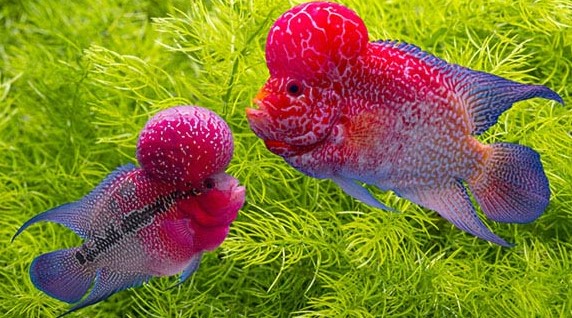
Fish with big heads do not merely stand out in appearance; their lifestyle, feeding habits, and behaviors also differ significantly from other fish species. For example, their enlarged cranial features often enable fish with big heads to consume larger or different types of food than their counterparts with smaller heads.
The Ocean Sunfish, for example, predominantly feeds on jellyfish, a diet made possible by its large mouth. Its ability to consume large quantities of jellyfish helps control jellyfish populations, thereby maintaining the balance of the ecosystem.
Habitats of Big-Headed Fish
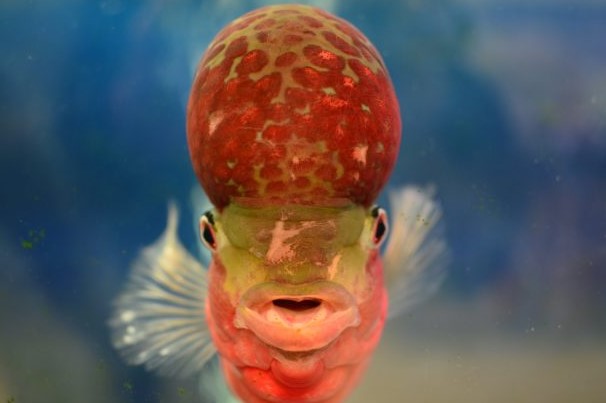
Fish with big heads can be found in a variety of habitats, from freshwater rivers and lakes to the vast open oceans. Bighead Carp thrive in large rivers and lakes, while Ocean Sunfish favor the open ocean, often seen basking near the surface. Understanding the habitats of these fish not only illuminates their ecological role but also informs conservation efforts for those species at risk.
Are There Endangered Fish Species Known for Their Large Heads?
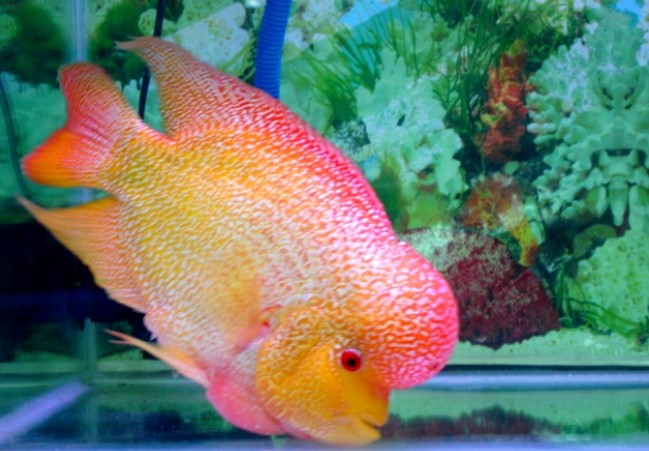
Sadly, the very traits that make these fish unique also make them vulnerable. The Bighead Carp, despite its proliferation in certain areas, is considered a vulnerable species in its native range due to habitat loss and overfishing. Concerted efforts are necessary to protect these aquatic animals with prominent heads, as their loss would significantly impact the balance of our marine ecosystems.
Big Heads, Bigger Responsibilities
The large-headed fish are often keystone species in their respective ecosystems, playing vital roles in maintaining the environmental equilibrium. The Bighead Carp, with its filtration apparatus and large-scale plankton consumption, helps prevent algal blooms, a common environmental issue in many freshwater habitats. Similarly, the Ocean Sunfish’s jellyfish-centric diet controls the jellyfish populations, reducing their detrimental impact on marine ecosystems.
However, the delicate balance of these ecosystems is increasingly threatened by human activities, from habitat destruction and pollution to overfishing and climate change. Recognizing the essential roles these fish with oversized heads play in their habitats underscores the urgency to conserve them and their environments.
Fascinating Behaviors of Fish with Big Heads
Fish with pronounced heads often exhibit unique behaviors that set them apart from other species. The Ocean Sunfish, despite its bulky shape, performs stunning breaches, leaping out of the water in a display of acrobatic prowess. This behavior is believed to help remove parasites from their skin, as they have fewer other means of grooming due to their body structure.
Pufferfish, another example of fish with disproportionately large heads, are known for their impressive defensive mechanism. When threatened, they can inflate their body by swallowing water or air, causing their body to enlarge and deterring potential predators. This behavior, enabled by their large, flexible cranial structure, highlights the crucial survival role of their big heads.
Big Heads and Communication
Do fish with enlarged heads communicate differently than other fish? Research suggests that the head size and shape can indeed affect fish communication. For instance, some species of cichlids, a group of fish known for their enlarged cranial humps during the breeding season, use these exaggerated features as signals in mate choice and competitive interactions.
Protecting Big-Headed Aquatic Wonders
While the world of big-headed fish fascinates us, these species are facing growing threats, many stemming from human activities. Overfishing, pollution, habitat destruction, and the impacts of climate change are collectively putting pressure on these species, pushing some towards the brink of extinction.
Conservation efforts for these fish with big heads need to encompass both their protection and the preservation of their habitats. This dual-pronged approach will not only ensure the survival of these species but also maintain the overall health and diversity of our aquatic ecosystems.
The story of fish with big heads is a tale of adaptation, survival, and ecological balance. It serves as a poignant reminder of the remarkable diversity of life on Earth and our role in its preservation. With continued research, conservation efforts, and a deeper appreciation of these unique creatures, we can ensure that the tale of the big-headed fish continues to unfold in our beautiful, blue planet’s waters.
Also Read: Sicario Movies in Order (Latest Update)
Conclusion
In conclusion, fish with big heads captivate us with their unusual appearance and fascinating behaviors, reminding us of the sheer diversity and wonder of life under the sea. The scientific exploration into these remarkable creatures’ lives provides invaluable insights into evolution, adaptation, and the intricate balance of aquatic ecosystems. So, the next time you come across a fish with a disproportionately large head, remember: there’s more to its big head than meets the eye.
Iva Ort is an ingenious wordsmith and captivating blogger whose tales leap off the screen and into your imagination. With a pen as her wand, she weaves enchanting stories and insightful articles, leaving readers spellbound and craving more.

